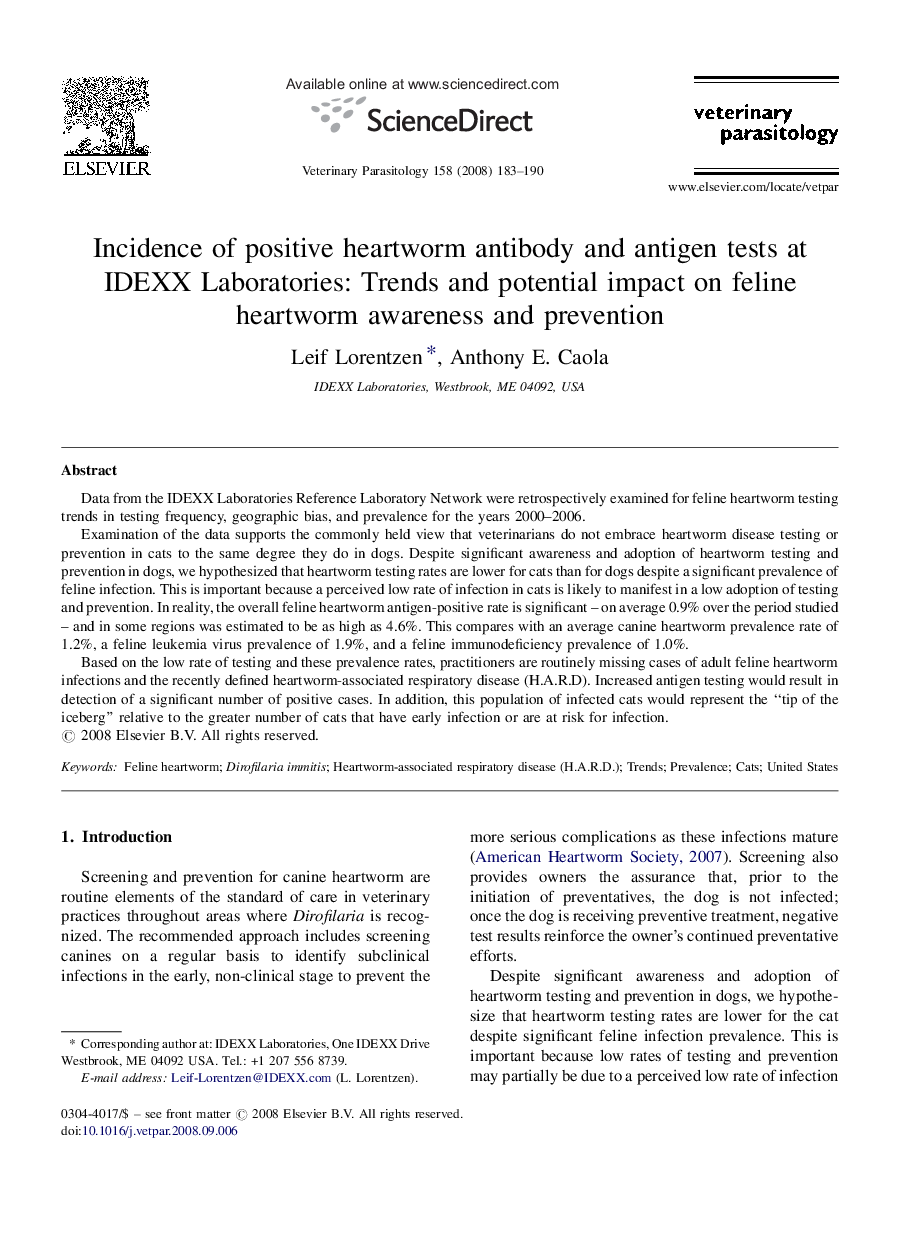| Article ID | Journal | Published Year | Pages | File Type |
|---|---|---|---|---|
| 2471388 | Veterinary Parasitology | 2008 | 8 Pages |
Data from the IDEXX Laboratories Reference Laboratory Network were retrospectively examined for feline heartworm testing trends in testing frequency, geographic bias, and prevalence for the years 2000–2006.Examination of the data supports the commonly held view that veterinarians do not embrace heartworm disease testing or prevention in cats to the same degree they do in dogs. Despite significant awareness and adoption of heartworm testing and prevention in dogs, we hypothesized that heartworm testing rates are lower for cats than for dogs despite a significant prevalence of feline infection. This is important because a perceived low rate of infection in cats is likely to manifest in a low adoption of testing and prevention. In reality, the overall feline heartworm antigen-positive rate is significant – on average 0.9% over the period studied – and in some regions was estimated to be as high as 4.6%. This compares with an average canine heartworm prevalence rate of 1.2%, a feline leukemia virus prevalence of 1.9%, and a feline immunodeficiency prevalence of 1.0%.Based on the low rate of testing and these prevalence rates, practitioners are routinely missing cases of adult feline heartworm infections and the recently defined heartworm-associated respiratory disease (H.A.R.D). Increased antigen testing would result in detection of a significant number of positive cases. In addition, this population of infected cats would represent the “tip of the iceberg” relative to the greater number of cats that have early infection or are at risk for infection.
